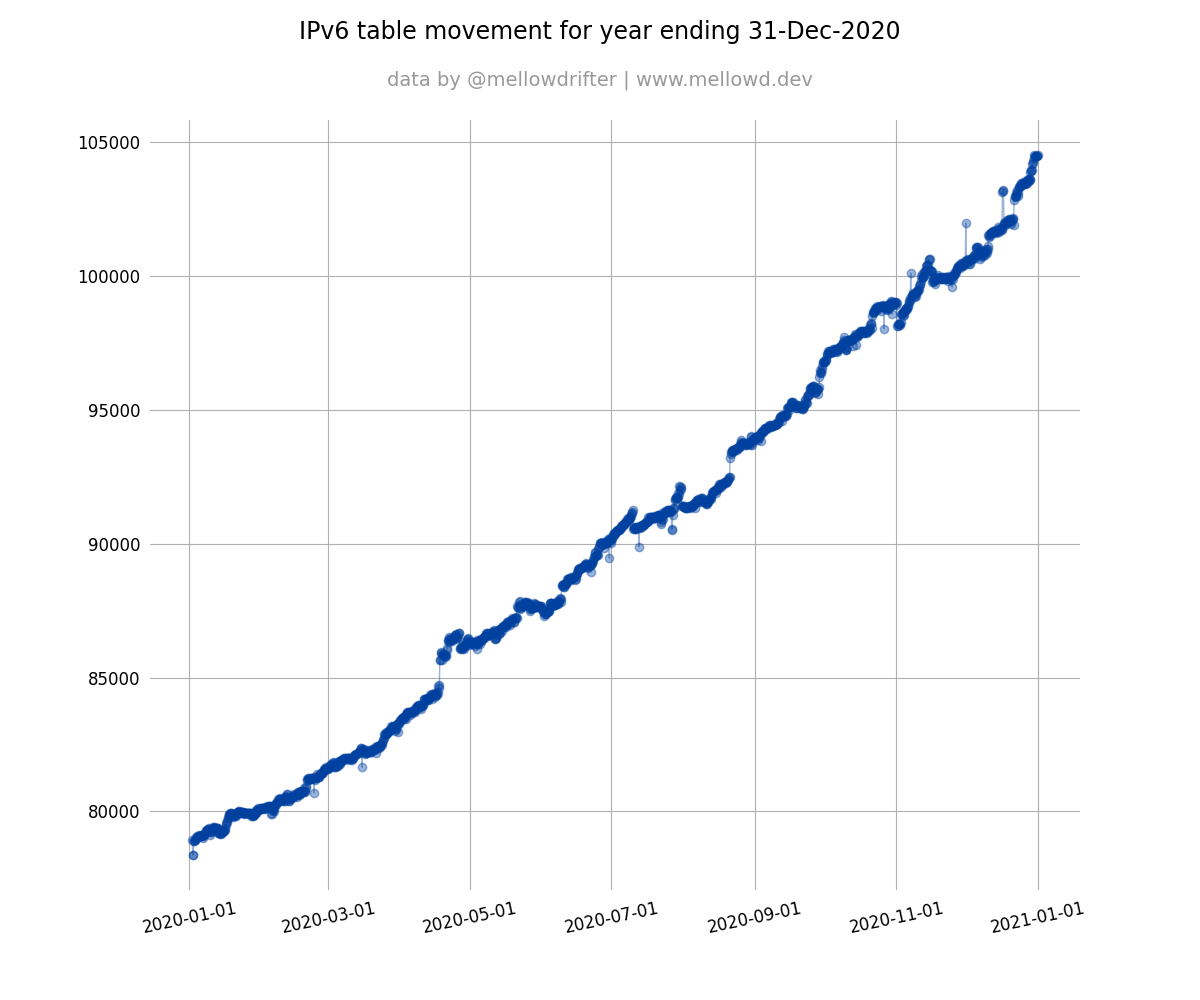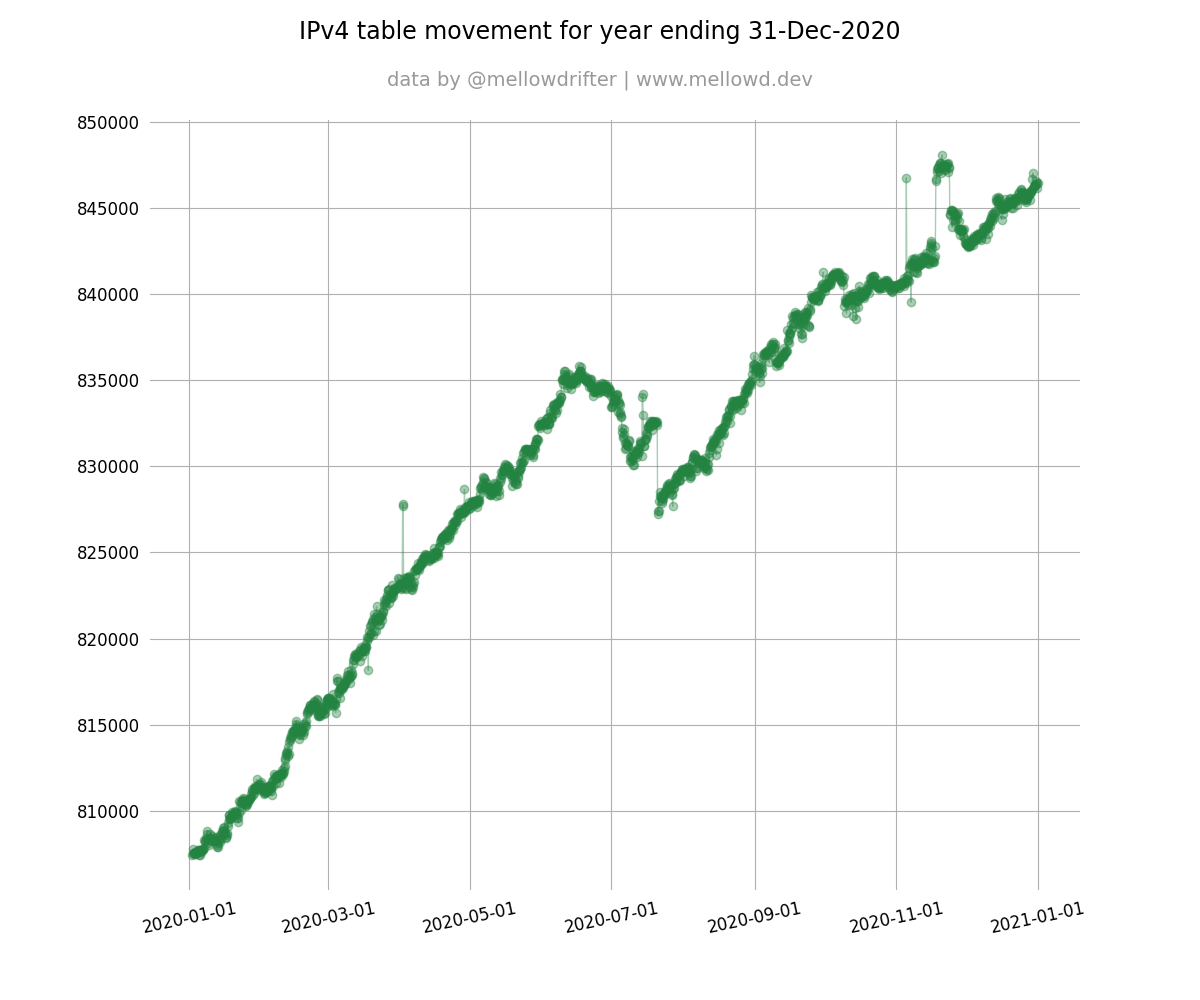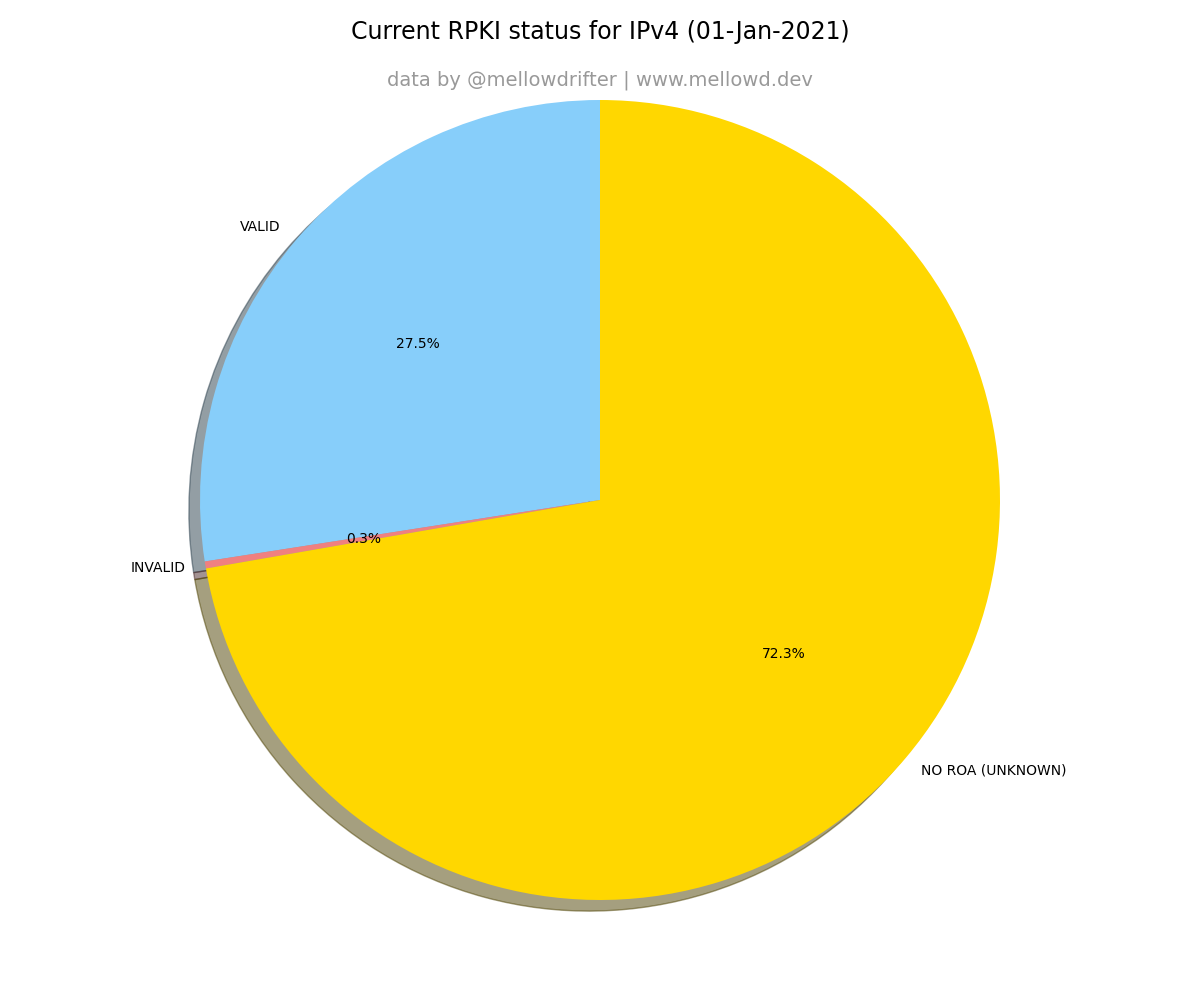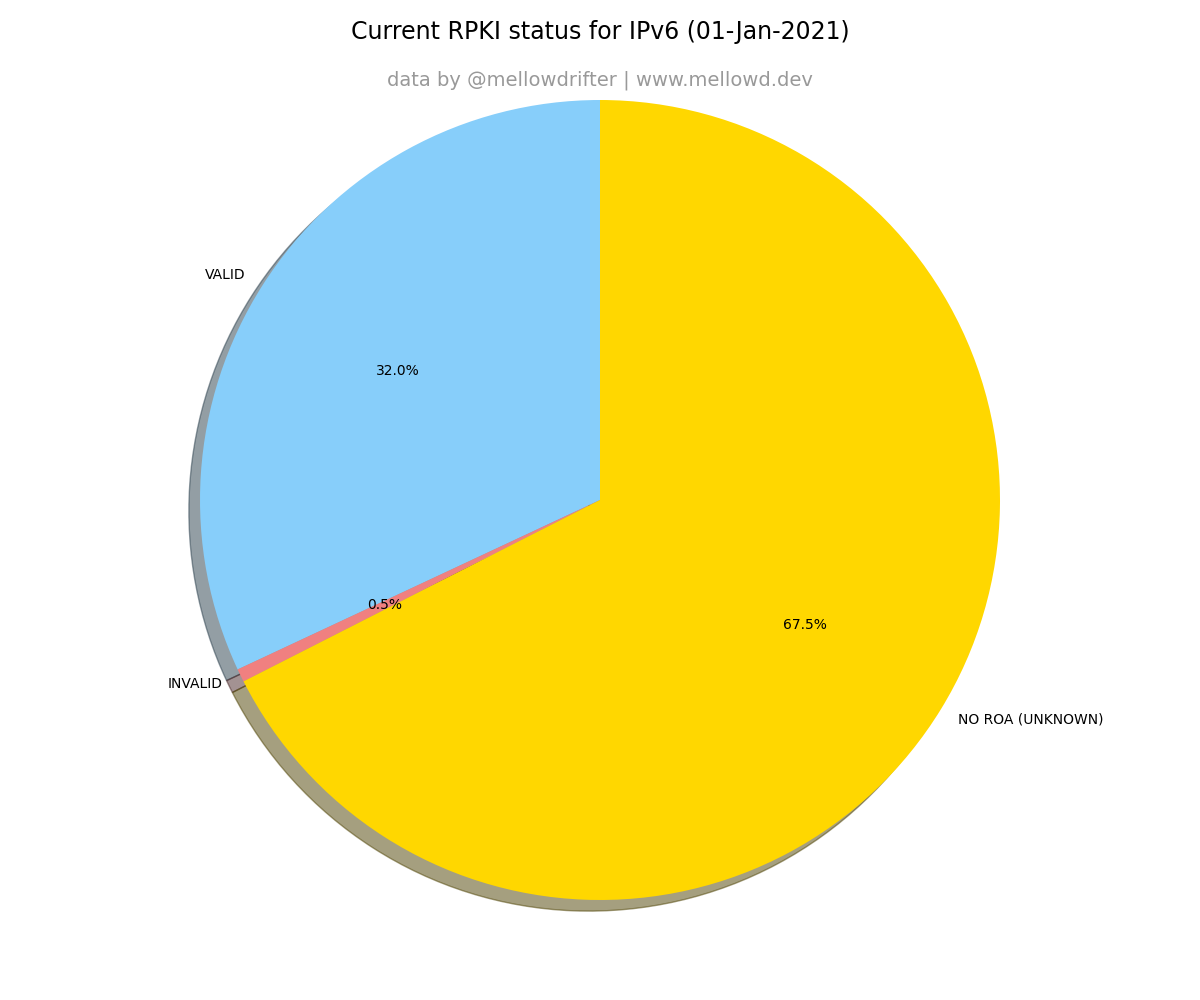A look at BGP in 2020
2020 was an eventual year in regards to the BGP table. RPKI saw a rapid increase, and we also finally broke over 100,000 IPv6 prefixes in the default free zone.
IPv6 growth
We started 2020 with an IPv6 count of 78,870. In just a single year we’ve rocketed up to 104,413. That’s an increase of 25,543 IPv6 prefixes, or a 32.39% increase. For comparison, 2020 started with 807,446 IPv4 prefixes and ended with 846,051. That’s an increase of 38,605 prefixes, or a 4.9% increase. The pace of growth in IPv6 has been high indeed.
There are currently 1,005 ASNs originating IPv6 only. 2020 started with 678 ASNs originating only IPv6.
 IPv6 growth non-stop.
IPv6 growth non-stop.
IPv6 subnets
All subnet sizes increased of course. /48s went from 37,976 to 50,625. Some interesting subnet sizes increased rapidly for it’s group, even though overall they did not add much to the table size. A few examples being /45s going from 478 to 747; /44s going from 4,919 to 7,546; /43s going from 280 to 711; and /42s more than doubling from 1,010 to 2,432. The largest RPKI signed valid IPv6 prefix is a single /19 originated by AS3320, DTAG Internet service provider operations.
At the start of the year, /48s took up 48.16% of the IPv6 table. At the end of the year they took up 48.49%.
IPv4 growth
As noted before, there were 38,605 prefixes IPv4 prefixes added to the table this year. Individually more than IPv6, but the percentage growth is much lower.
There are currently 49,858 ASNs originating IPv4 only. 2020 stated with 48,781 ASNs originating only IPv4.
 A sustained dip took place mid-year which is pretty rare. After a while it starting growing again.
A sustained dip took place mid-year which is pretty rare. After a while it starting growing again.
IPv4 subnets
/24s take up most of the prefix space. They increased from 468,984 to 493,833 in 2020. /19s decreased from 26,052 to 25,549. /15s manged to both start and end the year at exactly 1,991. /8 dropped from 10 to 8. I expect to see more of these larger subnets get slowly broken up into smaller bits as IPs are worth their ‘weight in gold’.
The remaining /8s and their originators are as follows:
- 4.0.0.0/8 AS3356 (LEVEL3)
- 12.0.0.0/8 AS7018 (AT&T)
- 17.0.0.0/8 AS714 (APPLE)
- 38.0.0.0/8 AS174 (COGENT)
- 53.0.0.0/8 AS31399 (DAIMLER AG)
- 55.0.0.0/8 AS721 (US Department of Defense)
- 73.0.0.0/8 AS7922 (COMCAST)
- 214.0.0.0/8 AS721 (US Department of Defense)
Daimler is a Germany company. The rest of the /8s are in US hands, which makes sense as to when they were assigned. All /8s, except those owned by the DoD, are RPKI signed.
There are a few /8s completely missing from the table. They are as follows:
- 7.0.0.0/8 (US Department of Defense)
- 19.0.0.0/8 (Ford)
- 21.0.0.0/8 (US Department of Defense)
- 22.0.0.0/8 (US Department of Defense)
- 26.0.0.0/8 (US Department of Defense)
- 28.0.0.0/8 (US Department of Defense)
- 30.0.0.0/8 (US Department of Defense)
- 33.0.0.0/8 (US Department of Defense)
- 48.0.0.0/8 (Prudential Insurance)
11.0.0.0/8 is another /8 owned by the US DoD, but AS27651 (ENTEL CHILE) is originating 11.96.0.0/24 as of this writing. This is the only prefix with 11 in the first octet in the table. The other 9 ‘missing’ /8s have zero prefixes with 7, 19, 21, 22, 26, 28, 30, 33, or 48 as the first octet.
For interests sake, the top 3 first octect numbers with amount of prefixes in the table are:
- 103.x.x.x - 31,834
- 185.x.x.x - 30,786
- 45.x.x.x - 25,025
RPKI
2020 saw a large increse in the amount of signed prefixes. At the start of 2020, there were 151,270 IPv4 prefixes with valid ROAs in the table. We ended the year with 232,275 valid IPv4 ROAs, an increase of 81,005. I saw the table go from 4,931 invalid IPv4 prefixes to 2,387 as more providers start to block invalids from passing through. Total unsigned prefixes went from 651,250 to 611,411. Still a far way to go but moving in the right direction.

With IPv6, we went from 18,794 valid ROAs to 33,399 valid, almost doubling. Invalid went from 806 to 546. Unsigned prefixes increased from 59,274 to 70,470. Unfortunately it seems a lot of the IPv6 expansion is not getting signed.
